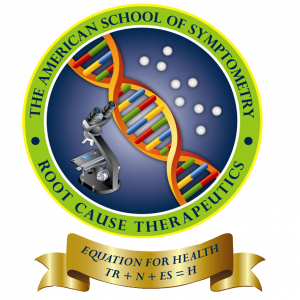
Dr. Maxwell Nartey
Professor of Symptometric Science, American School of Symptometry, NFP
Brief history of mental illness
For thousands of years, people believed that mental illness occurred only in individuals who were possessed by demons or evil spirits. Asylums for the insane were built all over Europe because there was an epidemic of mental illness in every European country. Families disowned those who were insane, and they severed all ties with them.
In the asylums, the mentally ill were chained to trees, poles, or beds, and they were starved or beaten to submission. This was not only cruel. It was downright barbaric.
In the early 1800s, the medical establishment in Austria, Germany, France and other European countries, created a department of psychiatry and they quickly turned psychiatry into a medical specialty. Dr. Benjamin Rush (1745-1813) became one of the early physicians to make a career in psychiatry.
In the first psychiatric book titled Observations and Inquiries upon the Diseases of the Mind, which Dr. Rush authored and published in the United States in 1812, he defined mental illness as a disease of the mind. This definition put to rest the thought of mental illness being the result of demonic possession.
He formulated clinical tests for mental evaluation. Subsequent psychiatrists documented the symptoms of mental illness, which was also called mania, or insanity.
In 1965, 152 years after his death, the American Psychiatric Association recognized Dr. Rush as “the father of American psychiatry”, and it never allowed his legacy to gather dust in the association’s library.
The most prominent symptoms of mental illness were and still are: delirium tremens, hallucination of voices, hallucination of vision, paranoia, delusion, split personality or personality disorder, bipolarism, neurosis, psychosis and schizophrenia. The observation of these symptoms facilitated differential diagnosis of mental illness.
Around 1850, drug manufacturers started producing pharmaceutical drugs to treat the symptoms of each psychiatric diagnosis. What has changed in psychiatry in terms of diagnosis? Little has changed.
The focus of psychiatric treatment is still the mind. Even though the mentally ill is no longer chained to a bed, and starved or beaten to submission in many mental institutions, almost everything else is still what it was in 1812. Someone once said, “The more things change, the more they remain the same”.
There are many behavioral deviations from normalcy. So far, the deviations from normalcy that fall outside the realm of psychiatry include: laughing foolishly, tendency to stare at a specific object for hours, repetitive behavior such as repeating the same words, sound or phrase over and over; cannibalism, having sex with a corpse, sadism, hysteria, mistrust, suspicion, public nudity, disregard for morals, sudden impulse to kill a person or an animal; suicidal tendency, arson, child molestation, kleptomania (impulse to steal), tendency to set a dog or a cat on fire, mass killing, serial killing, etc.
Around 1920, some psychiatrists divided mental illness into three categories: 1) severe mental illness 2) benign mental illness and 3) mental aberrations.
Only those who became a threat to themselves and to others, were considered to have severe mental illness. For this reason, they were taken to a psychiatric hospital for evaluation and confined to a mental institution. The rest who were suffering from benign mental illness or from mental aberrations, were allowed to comingle with “normal people”, and this practice continues until this day.
It is those who are allowed to comingle with “normal people” who become unpredictable in their behavior. Some of them molest underage boys and girls, abuse their spouse and children, and commit various illegal acts. Those who are not caught in the commission of a crime have gone on to become serial killers, bank robbers, arsonists, or shoplifters; horrible husbands or wives, dreadful fathers or mothers, awful children, etc.
If this world is not safe, it is because people are suffering from brain neglect, and no one is doing something about it, not even the psychiatrists.
The epidemic of mental derangement that hit Europe for over 600 years is re-emerging. This time, instead of the mentally ill being confined to a mental institution, they are living among normal people. They could be our next door neighbor, our colleagues at work, our roommate in college, the person we are dating, the pilot on a suicide mission, etc. People have become unpredictable.
Until a monster is caught, prosecuted, convicted and imprisoned, they will continue to live a double life, and hurt many individuals, or they will continue to be a burden on their families or on society.
The question is, why is every country not safe? The answer is, people are suffering from the consequences of brain neglect, and so far, no one has been able to do something about brain neglect. Psychiatrists and psychologists are doing their best, but they keep missing their target because they are focusing on the mind instead of focusing on the brain.
Difference between the brain and the mind
I would like to use verifiable facts to reexamine Dr. Benjamin Rush’s definition of mental illness as a disease of the mind.
It is an established fact that the mind is the abstract, intangible, formless, shapeless and nondescript part of the brain. It is associated with thinking, reasoning, memory, evaluating, making decisions, and passing judgment. This means if the brain is malnourished, many mental processes will be flawed. Fundamentally, the mind is just reflecting the health of the brain.
Do people know how to nourish their brain? No, they do not. All they do is drink water or a beverage, and eat food and then, they expect their brain to nourish itself. They got it all wrong. Here is what they do not know about the brain.
First, the brain is almost always jammed with debris, sludge, and concretions. The blood vessels and the lymphatic vessels are becoming narrower and narrower because of stenosis.
Occlusions that were caused by blood clots or fat globules, have cut off circulation to certain parts of the brain, hence the absence of oxygen and nutrients in the ischemic parts of the brain. This could be the brain of an 11-year-old, 16-year-old, 34-year-old, or 90-year-old. Also, it could be the brain of a man or a woman. Under these circumstances, gender, age, occupation, etc. are totally irrelevant. Mental illness is mental illness.
Every case of mild mental illness started in the same manner, meaning, they started as brain neglect. If the needs of the brain in terms of removal of debris, fat globules, blood clots and concretions are not satisfied, the person will suffer from cerebral anemia. It is cerebral anemia that will turn mild mental illness into severe mental illness (paranoia, schizophrenia, neurosis, psychosis, etc.).
Can psychiatric drugs remove debris and concretions like plaque, calculi, lithiasis, etc. from the brain? No, they cannot. Can psychiatric drugs restore good cerebral circulation by reversing stenosis and ischemia (bloodlessness)? No, they cannot. Can psychiatric drugs supply thermal energy and electrical energy to the brain? No, they cannot. Are pharmaceutical drugs nutrients? No, they are not, they are non-nutrients just like metals.
The mind is simply reflecting the state of health of the brain. If the brain is severely impoverished, how can a person have a healthy mind to process thought, produce ideas, become creative, take responsible initiatives, make good choices and sound decisions? They cannot.
The point I am making is, psychiatrists cannot cure mental illness because their concepts and principles are based on a profoundly flawed premise, and Dr. Benjamin Rush formulated this flawed premise.
Instead of blaming the mind for mental illness, he should have blamed an impoverished, anemic and jammed brain for causing mental illness. Here is something else that Dr. Benjamin Rush failed to consider, the liver.
The importance of the liver
The brain depends mostly on the liver for nourishment. If the liver is so jammed that it cannot convert essential amino acids to non-essential amino acids, the brain cells will not have tyrosine to produce two key neurotransmitters and an extremely important hormone. Melatonin is the hormone in question, and serotonin, and acetylcholine are the two neurotransmitters.
Read the continuation of this informative article in Part 2.
© Copyright 2021, The American School of Symptometry, NFP. No part of this publication may be reproduced or transmitted in any form or by any means, electronic or mechanical, including photocopying, recording, or by any information storage and retrieval system without the written permission of The American School of Symptometry, NFP. Library of Congress copyright number Txu 1-621-370, Washington D.C.


 Next Post
Next Post